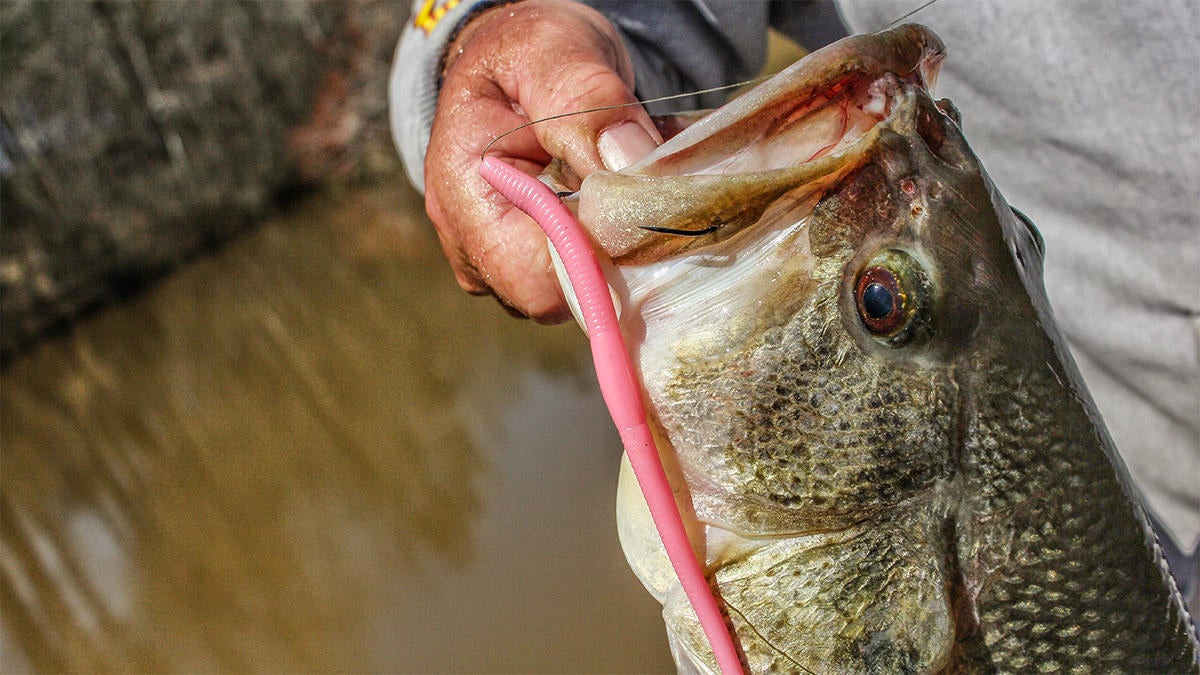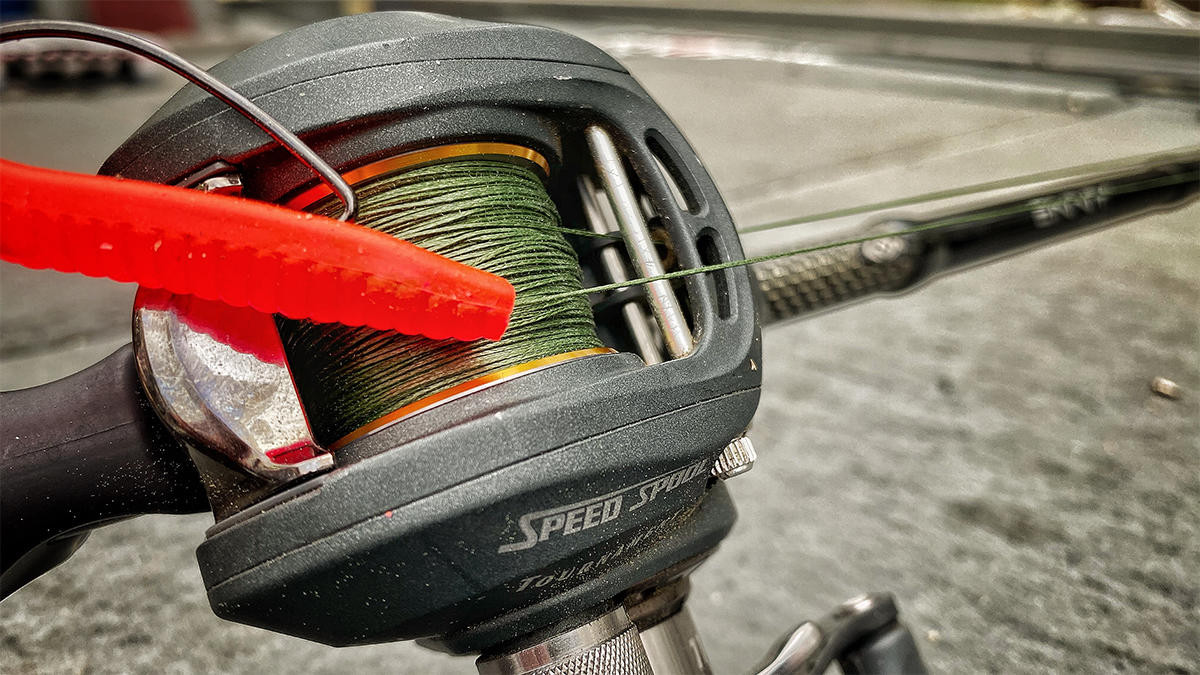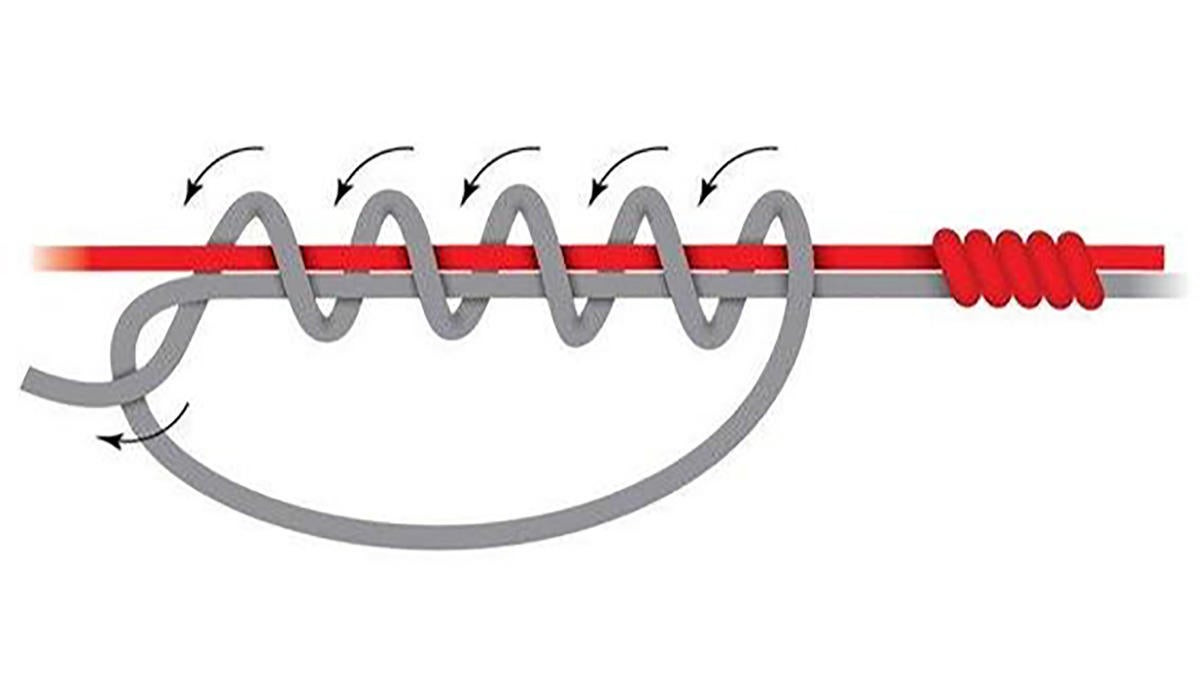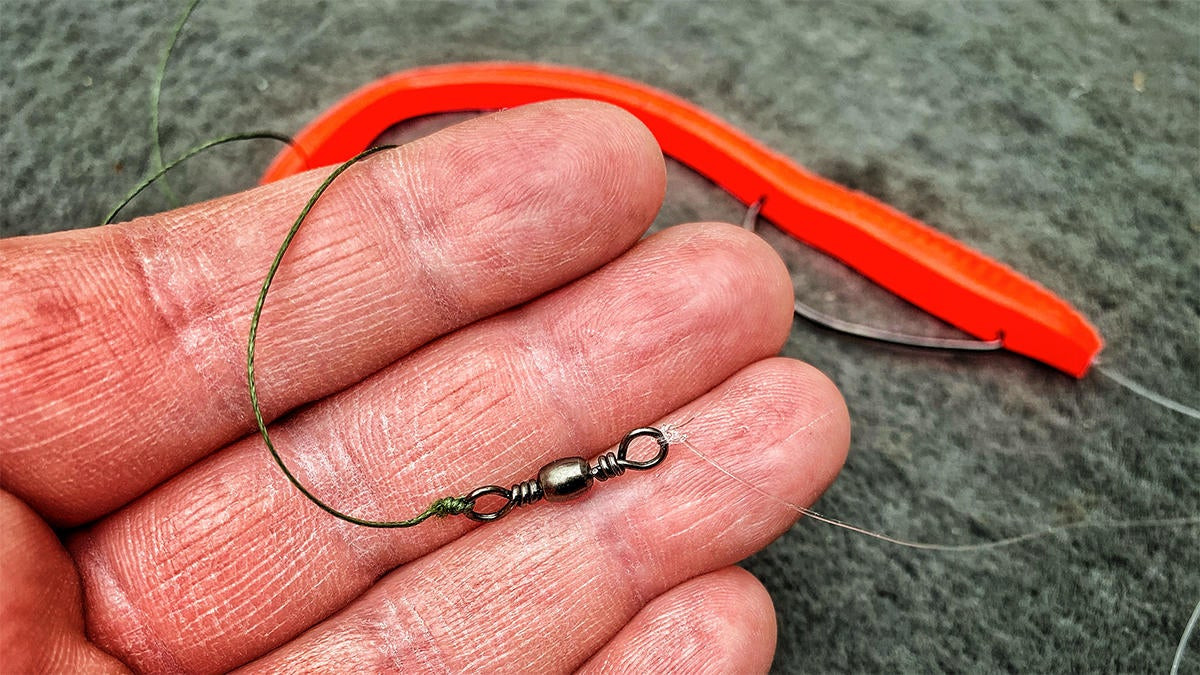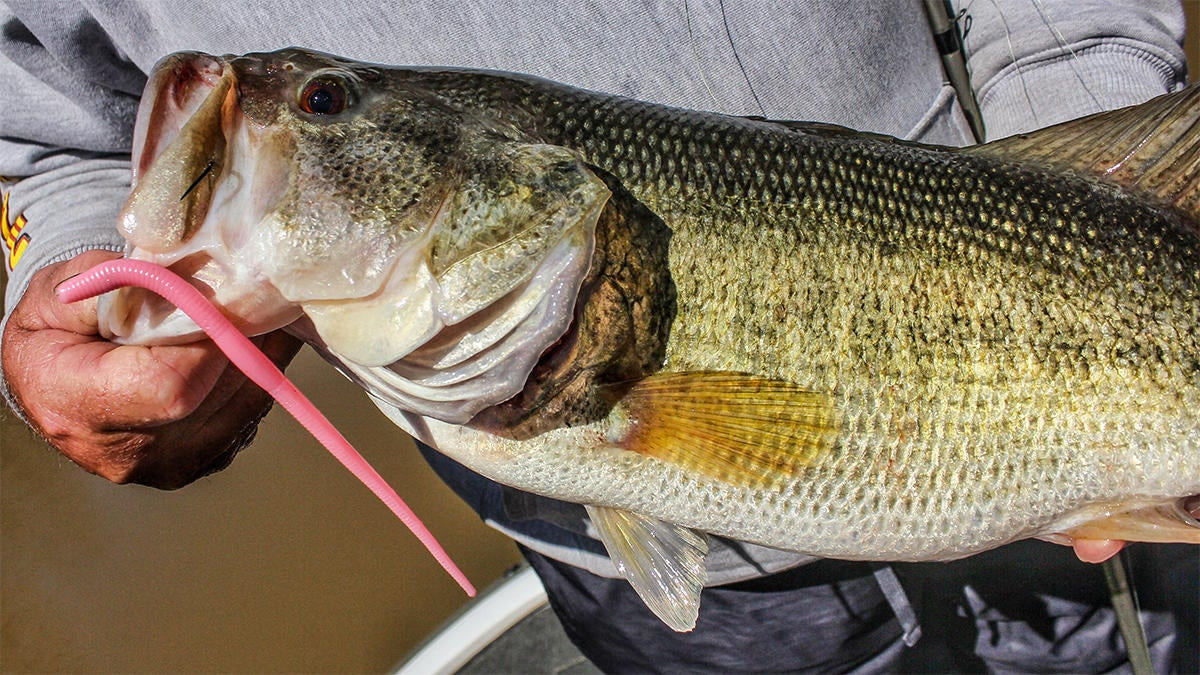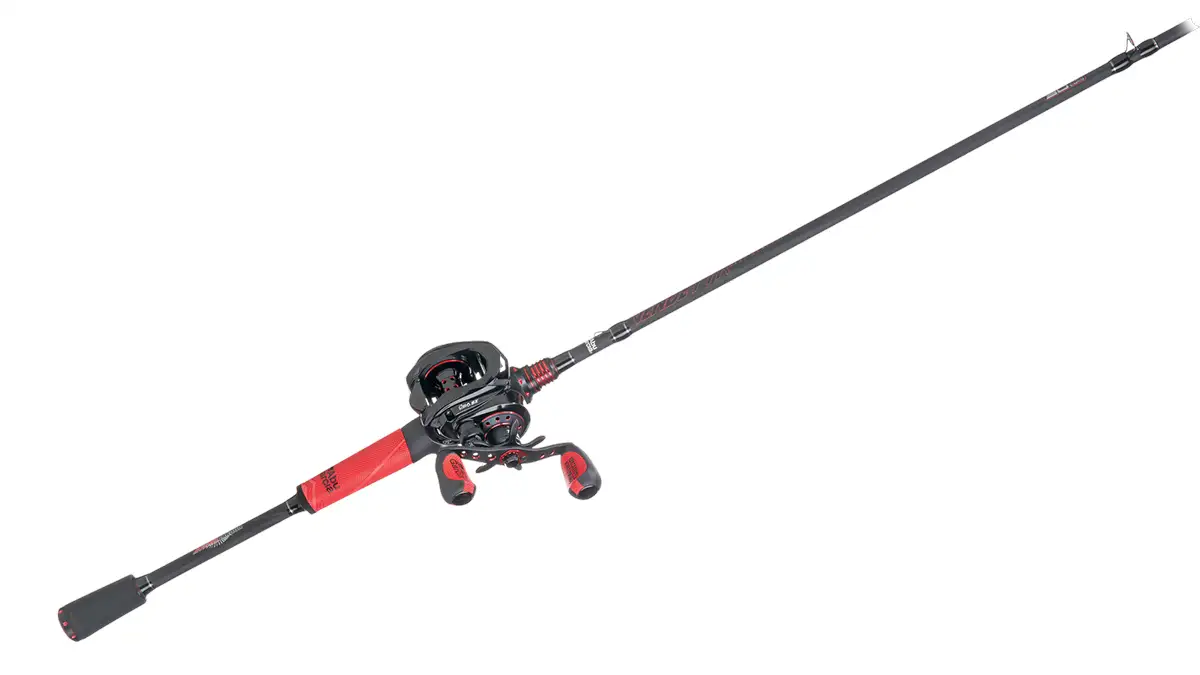I don’t know about you, but this spring bass fishing season has been pretty weird for me. Something just isn’t quite connecting for me. Normally, the prespawn period is when I catch my biggest bass of the year and although I’ve been catching plenty of fish, the true giants have eluded me thus far.
I went fishing last week and I kind of waved the proverbial white flag in regards to the reaction bait bite; I tried to force it and it just wasn’t working. So I did what I normally do when the bite gets tough. I leaned on a confidence technique and ended up skipping what seemed like miles of boat docks that afternoon with a 3/8-ounce jig. Of course, I caught a 4-pounder on the very first dock which made me think I was on some sort of pattern. So I spent the next several hours chasing a completely nonexistent pattern and capturing exactly zero additional bass.
That’s how it goes, right?
After I had enough jig skipping, I picked up a weightless floating worm rigged on a spinning rod in an act of desperation. Well, it figures that I got bit on the first four docks I skipped with that little worm. The problem, however, was that my gear was too wimpy. Every single fish broke me off on a dock post within a few seconds. I saw a few of the fish and they were definitely some good ones.
That got my brain spinning pretty hard. I was raised to throw floating worms on light tackle but I needed to find a way to beef things up and expand its possibilities a bit more.
After some experimentation, I found three different options that allow you to power fish with a floating worm. Each option has its pros and cons but I really think this will help you catch a few more fish in tough conditions. Let’s discuss everything and hopefully you’ll be able to choose the best option for your particular situation.
Straight braid and a meat hook
I feel like this should be some sort of personal motto for me; maybe y’all can put it on my headstone one day or something. If it were my choice, I’d fish with braided line and heavy-wire hooks all year long. Unfortunately, however, I don’t get to dictate that. The fish are the ones in charge.
Lame jokes aside, you can certainly fish a weightless floating worm on straight braid with a heavy-wire 4/0 Offset EWG hook. You probably won’t be able to skip it as well as you would with a spinning rod but for heavy-cover situations, especially in vegetation, it’s tough to beat.
I personally like to use 50-pound braid on a 7-foot, medium-heavy casting rod. When a bass bites, this setup allows me to set the hook as hard as I possibly can without the worry of breaking my line. Most folks tend to avoid heavy-wire hooks when fishing floating worms because the extra weight can hinder the slow-sinking action of the worm. If you think about it, however, the braided line helps negate this effect.
Braided line floats, so your heavy-wire hook isn’t going to sink as quickly as it would if it were connected to fluorocarbon. So I certainly don’t consider this approach causing a lack of action in regards to this technique.
The potential issues revolve around castability and the higher potential of snags. A lot of folks have a hard time skipping lures with braided line. It’s super thin and comes off the reel easily, so it’s easy to backlash with a weightless worm if you’re not super experienced with a baitcaster. Braided line also tends to saw into wood cover, which can cause you to lose fish over time.
If you’re primarily fishing vegetation, however, I’d definitely recommend giving this a shot. If the water is stained, you’re good to go; I don’t think the bass will be able to see your braided line. If you run across cleaner water, I’d recommend using some sort of marker to make sure your line stays dark and more invisible to the bass.
Braided line straight to fluorocarbon
This is the setup I’ll probably use most often when it comes to power fishing a floating worm. I’ve been doing this for the past few weeks and it seems to be a really good option that provides several advantages.
I’ll use a 50-pound braided line (some folks prefer 30-pound braid) as my main line and connect a 17- or 20-pound fluorocarbon leader to it with a Two Uni Join Knot. The leader just about matches the length of my fishing rod.
Everyone likes different leader knots and to be honest, I’m sure they’re all just fine; I don’t get too carried away with all of that. The Two Uni Join Knot has never failed me and it seems to come through my line guides very well, so I’ve always just stuck with it. No matter what leader line you use, however, I’d caution you against setting the hook too terribly hard when you’re using this method.
In my mind, any leader knot is a potential point of failure, so I try to avoid those “snap” hooksets that we tend to make with slack line; it just seems like a lot of shock for such a small knot to absorb. Instead, whenever I get a bite, I’ll pull into the fish a bit more on tight line when I set the hook to lessen the potential shock.
This is an excellent option when you’re skipping boat docks and other wood cover because you don’t have to worry as much about braid digging into the cover. So if you’re just casually working down the bank and tossing at whatever looks good, I’d tend to lean more towards this method than any other.
Braided line, a swivel and a fluorocarbon leader
I’ve met a bunch of folks who absolutely detest leader knots. Whether it’s because they don’t trust them or they simply haven’t practiced tying them enough, there are a lot of anglers out there who will do anything possible to avoid tying leader knots. Luckily, if you’re one of the people in that camp, you can still power fish a floating worm.
Take 30-pound braided line and tie it to a barrel swivel. Next, you’ll want to tie a 5- or 6-foot strand of 17-pound fluorocarbon to the other end of the swivel. Finish it off with a 3/0 or 4/0 Offset EWG hook and you’re good to go.
This method actually gives your floating worm a fairly unique presentation, which I have really liked. Instead of slowing falling in a traditional manner, this rig somewhat mimics a Carolina rig. Once your cast lands, the swivel will sink faster than the worm, which gives the worm an interesting, lackadaisical fall to it. As it follows the swivel through the water column, this gives you the chance to target bass a bit deeper in the water column. It’s tough to do that with the other two aforementioned rigs.
There are, however, two drawbacks to this setup. The first one deals with castability because of the barrel swivel. Everyone casts differently with different lengths of line coming off of the rod tip, so you have to be very particular about your leader length. You can’t reel that swivel through the line guides so that’s something to be very careful of. That swivel can also catch vegetation if you’re fishing around slop, which in turn effects the action of the floating worm. So I’d suggest trying this rig if you’re fishing mainly around open water or wood cover.
Final thoughts
I have always thought that fishing a weightless floating worm was best meant for spinning gear. I’m sure everyone has their different opinions on it, but after some pretty intense experimentation the past few weeks, I’ve learned that it’s a much more versatile technique than we might think. If you strategically beef up your gear and line, you might just find a new favorite way to bass fish.


